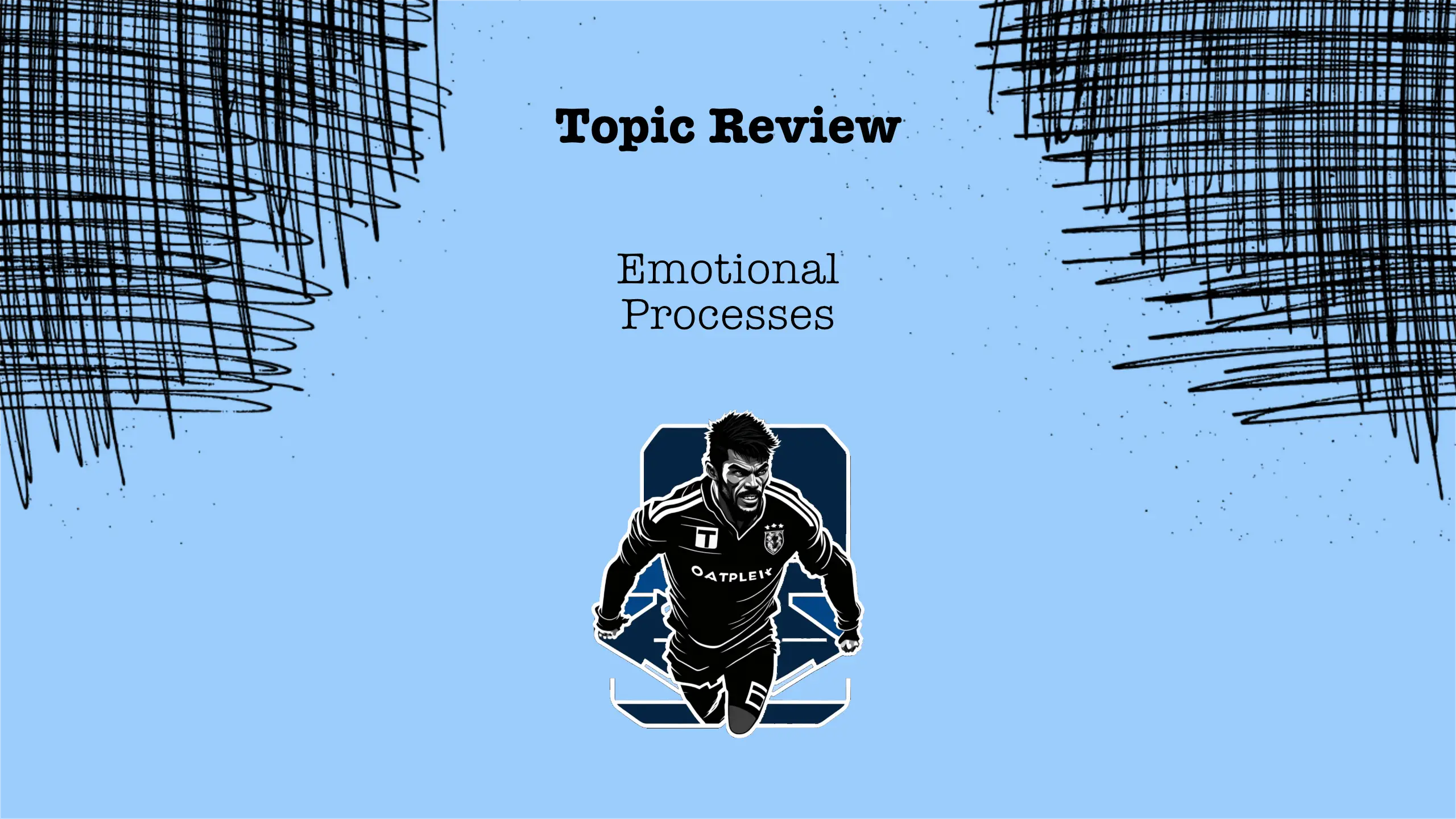Emotions play a functional role in athletic performance, influencing both physiological readiness and psychological focus. Optimal emotions signal effective access to personal resources, while dysfunctional emotions reflect a lack or inefficient use of those resources.
At the core of this discussion is the Individual Zones of Optimal Functioning (IZOF) model, which offers a comprehensive framework for analyzing how athletes’ subjective emotional experiences affect performance outcomes. The IZOF model integrates emotional content, context, and form to explain how emotions interact dynamically with psycho-biosocial states — the total expression of human functioning in competitive environments.
Key Ideas
1. Goals of emotional process research
Research in sport psychology on emotional processes aims to:
- Understand the relationship between emotions and athletic performance.
- Evaluate the strengths and limitations of nomothetic (generalized) versus idiographic (individual-oriented) approaches.
- Apply individual-oriented assessments to capture athletes’ unique emotional patterns and states.
This perspective positions emotion as a central determinant of both success and failure in competitive sport.
2. Functional impact of emotions
Emotions are understood through their functional role in performance:
- Optimal emotions → indicate resource availability and effective recruitment (e.g., confidence, readiness, focus).
- Dysfunctional emotions → reflect lack of resources or failure to use them effectively (e.g., anxiety, frustration).
Thus, emotion is both an indicator and a regulator of an athlete’s performance capacity.
3. The IZOF model explained
The Individual Zones of Optimal Functioning (IZOF) model provides both qualitative and quantitative tools to study emotional performance.
Its core function is to describe, predict, explain, and regulate the emotional states that shape successful performance.
The model emphasizes that:
- Each athlete has a personal “zone” of optimal emotions where performance peaks.
- Both positive and negative emotions can be optimal or dysfunctional, depending on the individual.
- The key determinant is how emotions influence energy mobilization, organization, and control in specific contexts.
4. Energizing and organizing functions of emotion
The IZOF model identifies two main functions of emotions in sport:
- Energizing – activating physical and psychological readiness for performance.
- Organizing – structuring focus, decision-making, and coordination.
Together, these mechanisms determine whether emotional energy supports or hinders optimal performance.
5. Five dimensions of emotion-performance interaction
The IZOF model describes five interacting dimensions that influence how emotions affect performance:
- Intensity (energy) — impacts emotional content and timing.
- Time — co-influences intensity and contextual adaptation.
- Context (space) — defines environmental and situational conditions.
- Content (information) — refers to emotional meaning and direction.
- Form — the integrative structure connecting all other dimensions.
These dimensions are dynamic and interdependent, creating complex psycho-biosocial states that fluctuate throughout performance.
6. Core emotional constructs
- Performance-related psycho-biosocial state: The situational, multimodal expression of total human functioning in sport.
- Emotional state: The current, situational experience and reaction to events.
- Emotionality: Enduring emotional patterns and dispositions.
- Meta-emotion: Beliefs and attitudes toward one’s emotional experiences.
- Resources matching hypothesis: Suggests that performance depends on the alignment between emotional resources and situational demands.
Selected Citations
- “Performance-related psycho-biosocial state — situational, multimodal, and dynamic manifestations of total human functioning.”
- “Emotional state — situational experiences, reactions, and processes.”
- “Emotionality — emotional patterns, dispositions, and traits.”
- “Meta-emotion — knowledge, beliefs, and preferences about one’s emotional experiences.”
- “Resources matching hypothesis — explains the functional impact of emotion upon performance.”
Academic Reference
Ruiz, M. (2017). Emotional Processes.
External References
- Hanin, Y. (2007). Emotions in Sport: Current Issues and Perspectives. In Tenenbaum, G., & Eklund, R. (Eds.), Handbook of Sport Psychology. Hoboken, NJ: John Wiley & Sons, pp. 31–58.
- Hanin, Y. (2000). Individual Zones of Optimal Functioning (IZOF) Model. In Hanin, Y. (Ed.), Emotions in Sport. Champaign, IL: Human Kinetics, pp. 65–89.
- Hanin, Y. (2000). IZOF-Based Individualized Emotion-Profiling. In Hanin, Y. (Ed.), Emotions in Sport. Champaign, IL: Human Kinetics, pp. 301–316.
